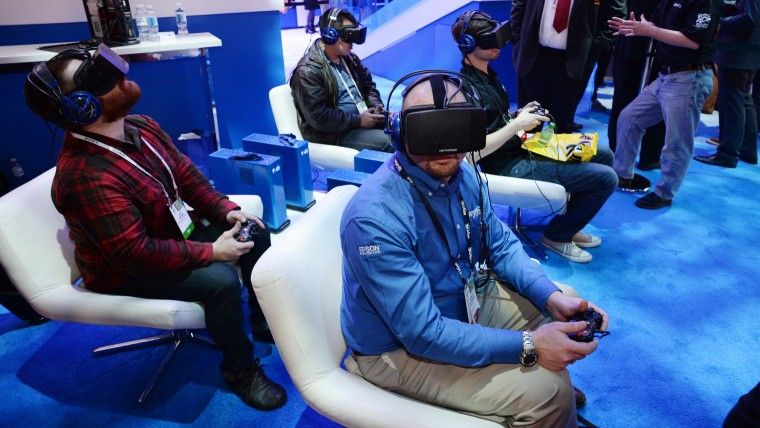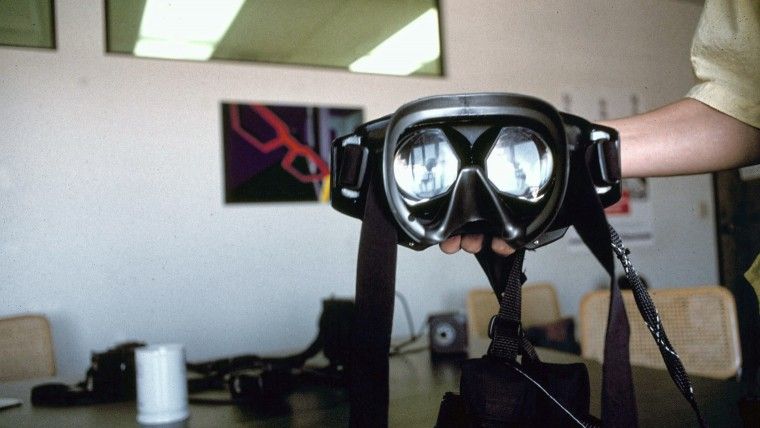Jaron Lanier is a visionary in every sense of the word. He coined the term “virtual reality” in the 1980s, pioneered head-mounted wearable displays and went on to apply the technology to cutting-edge medical imaging.
He is also a respected author and social commentator, who has provided a comprehensive critique of what current digital economic models could mean for the future.
Now the virtual reality (VR) technology he spearheaded three decades ago is about to finally hit the market, with the release of products such as the Facebook-backed Oculus Rift and Sony’s Project Morpheus for PlayStation 4.
But virtual reality has implications far beyond the gaming industry, he says. At its best it can “augment” what a person sees, and enhance their understanding and appreciation of the world by creating a “mixed reality” via wearable displays.
Back in the eighties, he wrote that the technology would allow people to walk around and see the world with extra content in it. “A lot of the focus was about doing less harm to the physical world so, instead of expending resources, you could do things virtually,” he says.
Over the last 30 years, he has tested numerous versions of VR wearable displays. “Everything people can see today existed in prototypes decades ago. And I mean that without exaggeration. There were things that looked just like Google Glass and Oculus Rift. It’s just that it was very expensive.”
VISIONS OF THE FUTURE
Mr Lanier originally predicted wearable VR displays would become viable as a consumer product in 2020, using calculations based on Moore’s Law – the rule that computer processing speeds double every 18 months.
“There are two things going on. Hardware gets better and cheaper, and software gets worse. So hardware is the wind in your sales and software is the drag,” he says.
Technology such as Google Glass, which displays hands-free smartphone information, is relatively straightforward as it is not so dependent on software advances.
“But if you want to do something that includes virtual reality and augmented worlds, that is quite difficult to do well. Even a lot of people in the field today haven’t fully understood how hard some of it is to do. So if you count the software being good, I think 2020 might not be so far off,” he says.
He believes there are numerous compelling uses for VR.
“A lot of the applications in education fascinate me. My favourite one is where you could walk through a city and grab a virtual dial and turn back history so you can see what it would have been like in different historical periods. If done well it could be incredibly provocative and give you a much more grounded feeling for history.”
There are so many possible uses of the technology – it is a huge – there really is no end to it
Features such as simulated X-ray vision could allow wearers to see through the surface of structures and living things to display their internal mechanisms.
VR applications could also display mathematical equations and calculations attached to everyday objects in real time. “So, for example, if you were at a ball game and were able to watch the equations of motion as they apply to the ball in real time – it could be amazing for kids.
“Some of this really goes beyond being a gimmick and has real profundity.”
More mundane uses include the ability to see your interior decorating virtually before it has been done. And as Mr Lanier is keen to stress: “There are so many possible uses of the technology – it is a huge – there really is no end to it.”
INDUSTRY ADOPTION
The sophistication of software required is still a long way off, though. “It could still be a generation or two of people – not devices – until some of those things are really good. The potential is so great people might very well be motivated to expend that effort,” he says.
But when it comes to applications in industry, the technology is not only mature “but kind of boring” because they have been around for decades already, he adds.
The airline industry was one of the biggest early funders of augmented or mixed reality, and uses the technology for training simulations.
Mr Lanier has also helped develop its usage in medical applications, such as real-time support for surgeons. For example, superimposing medical imagery from an endoscope directly on to the patient’s body so the surgeon can get a better sense of what is going on. “That is a very established technology and one of the first to work well,” he says.
Virtual technology prototypes have been developed to allow factory workers to understand how to put together complicated devices. He believes three-dimensional exploded disassembly processes and test procedures could be particularly beneficial to field engineers who have to repair complicated devices on-site.
“That has been implemented in some cases, but it has been well prototyped for some time. I expect that to be important and I think it will be important for emergency services,” says Mr Lanier.
More prosaic uses of the technology could include facilities management of large warehouses or shipyards, where there are vast numbers of stored items, which could be more easily located using mixed reality indicators rather than having to refer to a record on a computer.
LESS IS MORE
However, Mr Lanier cautions against an over-reliance on this technology. “The problem is that software is often a little buggy and it is hard to get it just right. In the same breath as you talk about how useful it is, you have to add the qualifier – providing people use it with perspective, intelligence and balance.”
Temperate usage of the technology for consumers will also yield the best sensory experience, he says.
“I remember we used to keep a lot of flowers around, so when you had experienced the virtual world for an hour and then looked at a flower after coming out, it had this subtlety you’d never seen before. It can really wake up your senses.”
But there are more sober reasons for judicious usage of the technology, given the current debate around online privacy.
“One of the [digital] trends is an economic model where people prioritise low cost or no cost and convenience over anything else. And so they are willing to give up their privacy and their information to third parties without understanding the implications, just to get something free or cheap,” he says.
“The problem with that model in connection to wearables in general, and virtual reality and mixed reality in particular, is that these devices gather data from you at a much more intimate level.
“So it’s not just what you do through a keyboard or a touch screen, it’s your heart rate, where you are looking, where you are sleeping, your metabolism. It is all kinds of things about you.”
Access to this type of information means there is even greater potential to manipulate individuals. As such Mr Lanier says he no longer views wearable applications that monitor and generate feedback about peoples’ bodies – and help them make healthier choices – as necessarily beneficial.
He says: “These days it has this creepy quality to it. Yes, it means you are getting all this feedback, but who else is? Is some remote intelligence service getting this feedback or some criminal organisation hacking into some service and getting it?”
But that doesn’t mean people shouldn’t use these types of applications; they should just take an informed view. “If somebody does want to get some health feedback device, they should think very hard about the company and they should think hard about their situation,” he says.
Neither is Mr Lanier a pessimist about future usage of virtual reality wearable displays. “If they are done well, they are like a fine wine, which is enjoyed best in moderation,” he says. “I think it will be both widespread and cherished, but at the same time should be used sparingly, which in my judgment would be the best outcome.”

VISIONS OF THE FUTURE
INDUSTRY ADOPTION


